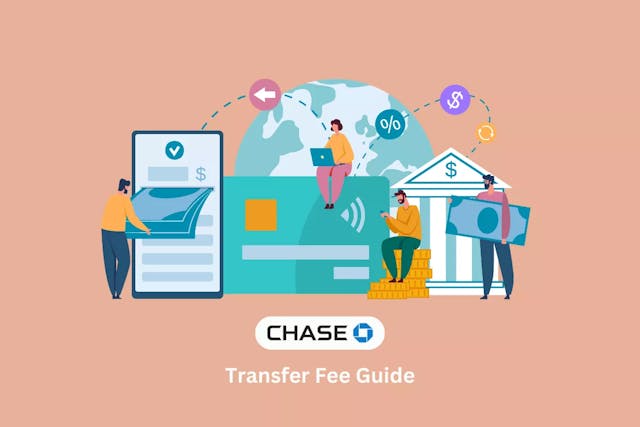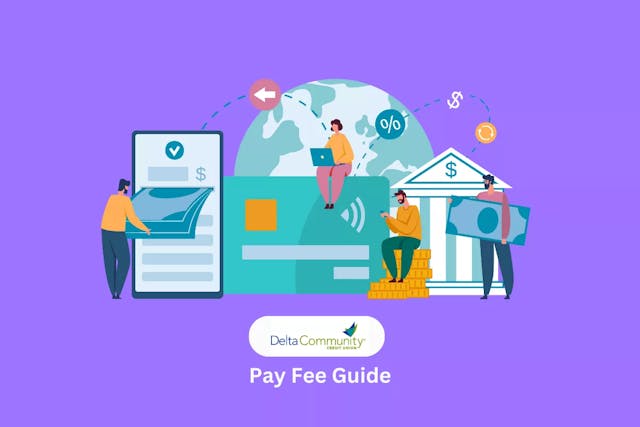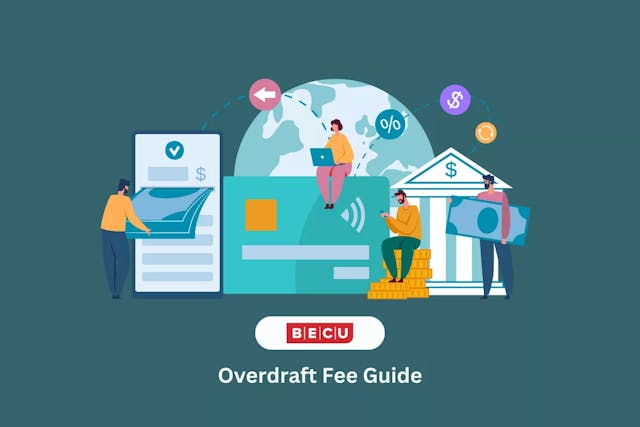What Is an Overdraft Fee?
Wells Fargo Bank issues you overdraft fees when you don’t have enough money in your account to complete a transaction but the bank pays for it anyway.
At Wells Fargo, overdraft fees apply automatically to most types of transactions, including:
- Checks or other transactions made using your checking account number
- Recurring debit card transactions (e.g. gym memberships, streaming service subscriptions)
- ACH transactions
- Online or automatic bill payments (e.g. auto-pay utility bills, credit card payments)
If you’d like for Wells Fargo to cover ATM and everyday debit purchases (gas, groceries, etc.) as well if you don’t have enough money in your account, you must first opt into the Wells Fargo Debit Card Overdraft Service.
How Much Do Overdraft Fees Cost at Wells Fargo?
Wells Fargo charges $35 per overdraft fee for most account types, and $15 per overdraft fee for Wells Fargo Teen Checking accounts.
The fee only applies to transactions that cause you to overdraft your checking account by more than $5. For example, if you make a purchase without enough money in your Wells Fargo account and your checking account only falls to -$4.50, you can expect to not incur an overdraft fee.
Related Fees
If you overdraft your checking account, a number of scenarios could occur.
- Overdraft fee
- Overdraft protection fee
- Non-sufficient funds (NSF) fee
Overdraft fee
Overdraft fees most often occur when you are not opted into overdraft protection and Wells Fargo allows you to overdraft your account on checks, recurring debit card transactions, ACH transactions, or online or automatic bill payments.
Overdraft protection fee
Overdraft protection fees most often occur when you are opted into overdraft protection and Wells Fargo allows you to overdraw your account on checks; recurring debit card transactions; ACH transactions; online or automatic bill payments; everyday, non-recurring debit transactions; or ATM withdrawals.
Rather than a $35 overdraft fee, Wells Fargo will charge a $12.50 overdraft protection fee if you are opted into the program. To enable overdraft protection, you can link up to two qualified accounts so that Wells Fargo can transfer funds from one account to another in the event of an overdraft. Qualified accounts include:
- Savings or secondary checking account
- Line of credit
- Credit card
Related article: Wells Fargo Overdraft Protection Fee Guide
Non-sufficient funds (NSF) fee
A non-sufficient funds (NSF) fee — or returned item fee — occurs when you make a purchase but there are not enough funds in your account to cover the transaction. Instead of covering for you, Wells Fargo will decline the transaction, or return the item unpaid. Wells Fargo charges $35 for each transaction that causes you to overdraft your account by more than $5.
The bank will not charge you an NSF fee if it declines an ATM or everyday debit card transaction when you are not opted into the Debit Card Overdraft Service.
Special Considerations
Wells Fargo limits the number of overdraft fees — including both overdraft fees and NSF fees — to three for consumer accounts, two for Wells Fargo Teen Checking, or eight for business accounts per day.
Debit Card Overdraft Service is not available for certain accounts:
- Wells Fargo Clear Access BankingSM accounts
- Teen CheckingSM accounts
- Opportunity Checking® accounts
- IOLTA/RETA accounts
- Accounts for government entities
- Savings accounts
Additionally, Wells Fargo will not issue overdraft or NSF fees if both your ending daily account balance and available balance are overdrawn by $5 or less after the bank has processed all of your transactions on that day.
If you opt into overdraft protection, you’ll have peace of mind knowing that many of your transactions can be covered by Wells Fargo even if you don’t have enough money in your account; however, there are several things you should consider before opting in.
Overdraft protection is not mandatory. In fact, your bank is required to ask whether or not you want to opt in. When opening a bank account in person, this usually means that the representative will run through a long list of questions so they can get to know you better as a customer and customize your account to accommodate your needs. The overdraft protection question is usually lumped into this list of questions, so it can be easy to opt in without thinking about whether it actually makes sense for you and your financial situation. Do your research before opting in.
Accounts opted into a debit card overdraft service typically pay more on bank fees than accounts that aren’t opted in, and the bank could still charge you an NSF fee even if you are opted into overdraft protection. This might happen if you opted into overdraft protection but don’t have enough funds in your linked account to cover the transaction.
Remember: You can opt into or out of overdraft protection at any time.
Learn more about what you should know before opting into overdraft protection.
How to Avoid an Overdraft Fee
Overdraft fees and non-sufficient funds (NSF) fees are some of the most common charges detected on Cushion customers’ accounts, but there are small actions that you can take to avoid them at Wells Fargo.
Keep an eye on your account balance and charges
This might seem obvious, but it’s an easy one to forget. Banks are not legally required to notify you if you’ve overdrawn your account. They could apply an overdraft fee and deduct money from your account, leaving you with a negative balance, without you ever having known. They can also charge multiple overdrafts in a single day. If all of your bills come out at once, you could find yourself hundreds of dollars in the red.
It’s important that you monitor your checking and savings account balances closely and regularly so that you’re up to date on when direct deposit has hit your account and when money has been withdrawn.
Sign up for low-balance notifications
Rather than manually checking your balance and charges, you can sign up for notifications that alert you when you’re nearing a low balance. Most mobile banking apps offer this feature and allow you to set the threshold yourself.
This doesn’t give you a pass to neglect your bank account. You should still be monitoring your account regularly. This allows you to identify mistakes, like if someone has stolen your debit card number or if you’ve been charged more than once for a bill.
Low-balance notifications won’t let you in on insights like these, and monitoring your account for mistakes can be one of the most lucrative ways to put money back in your account so that you don’t overdraft.
Transfer money ASAP
It’s important to get money into your checking account as soon as possible. Do an immediate transfer from another checking account or savings account at the same bank, or deposit cash into the account in-person at a branch or via ATM.
Some ATM deposits may not be available immediately, so it’s important to know your financial institution’s policy. Bank-to-bank transfers and other mobile payment services can also take several business days to complete, but can be an alternative solution if you do not need the funds immediately.
Decide whether overdraft protection is right for you
An overdraft protection transfer can give you peace of mind knowing that you can withdraw money or make a purchase even if the funds aren’t currently in your account.
The Wells Fargo Debit Card Overdraft Service allows you to overdraft on ATM withdrawals and debit card purchases; however, your bank will charge fees for each transaction. If you opt into the service, you can overdraw your account and get stuck with an overdraft protection transfer fee that costs a fraction of the price of the normal fee. This could include linking your account to another checking account, savings account, credit card, or line of credit. While these methods might still stick you with a fee, the fee is typically about half of what a standard overdraft charge would be.
While opting in may seem to be the default for many account holders, not opting in altogether could save you a ton of money. If you try to make a purchase but it’ll send you into overdraft, the purchase will be declined. Consider not opting in if: you don’t have a lot of essential bills to pay, you’re trying to manage your spending, or you’re an avid user of mobile banking and text message alerts. Remember that you can opt into and out of the program at any time.
Learn more about how to avoid an overdraft fee.
How to Get Overdraft Fees Refunded
Sometimes, overdraft fees are inevitable. Luckily, if you get hit with an overdraft fee, that doesn’t have to be the end of it. You can try to get Wells Fargo overdraft fees refunded on your own, but there are a few things that you should do to increase your chances of success.
Prepare your information
Name, address, bank account number, the fees that you’d like to negotiate, and possibly your social security number.
Introduce yourself
“Hello. My name is , and I recently received an overdraft fee while using my card. I’m contacting you to see if you would be willing to refund this fee.”
Have your points of leverage ready
Have you been financially affected by COVID-19? Are you a loyal Wells Fargo customer who has banked with the institution for an extended period of time? Do you have multiple accounts with the bank? Do you make regular deposits? Is this overdraft a rare occurrence?
Be patient, persistent, and prepared not to get a refund every time
A little kindness goes a long way. Remember: The representative that you’re speaking with on the phone likely didn’t write the rules on refunds. But also, don’t hesitate to press the issue if you initially hear “no”—that’s what your points of leverage are for. Sometimes, success depends on the representative that you speak with, so try calling back a few days later to speak with someone new. Finally, you have to be willing to lose some negotiations. Try not to get discouraged, but do try to take the necessary steps to avoid an overdraft fee in the future.
Learn more about how to get an overdraft fee refund.
Find Wells Fargo’s full fee schedule here.



